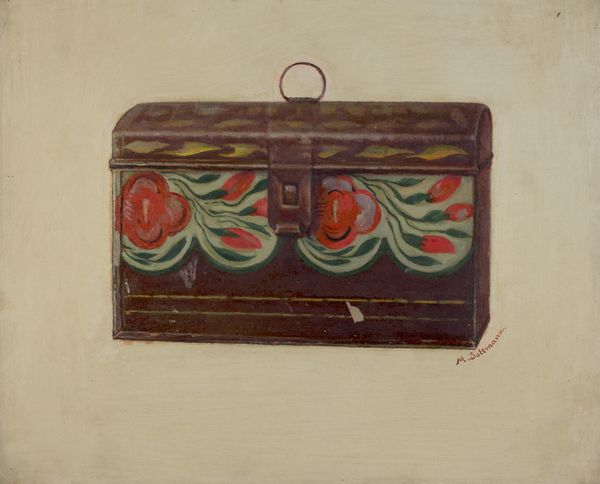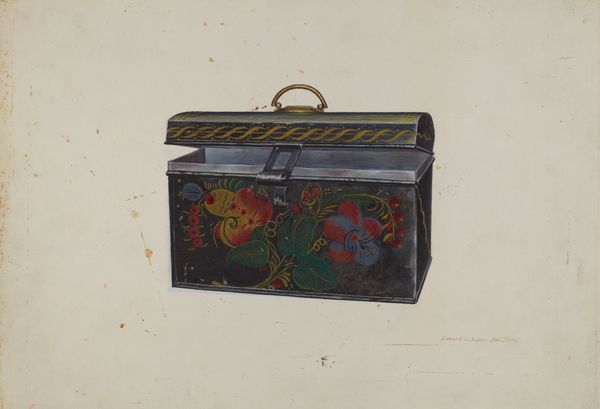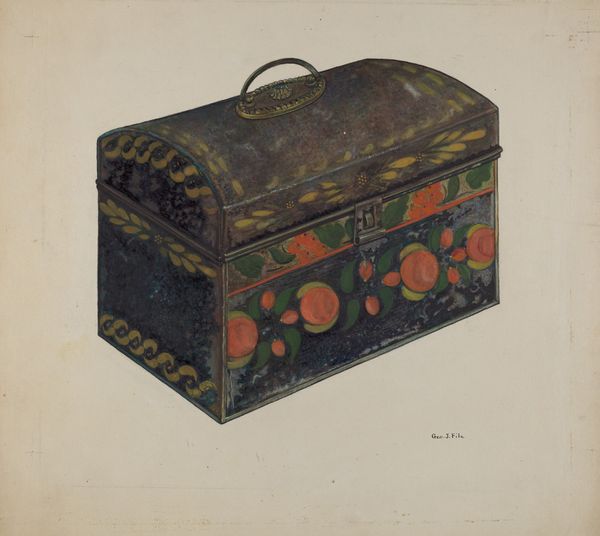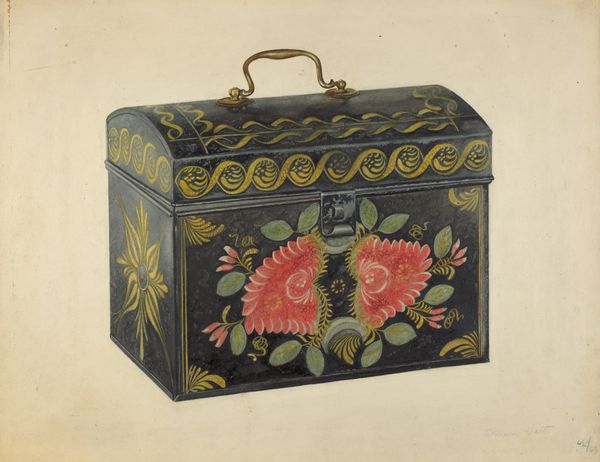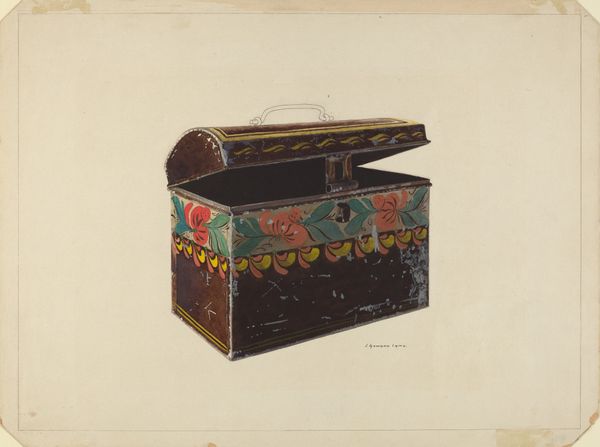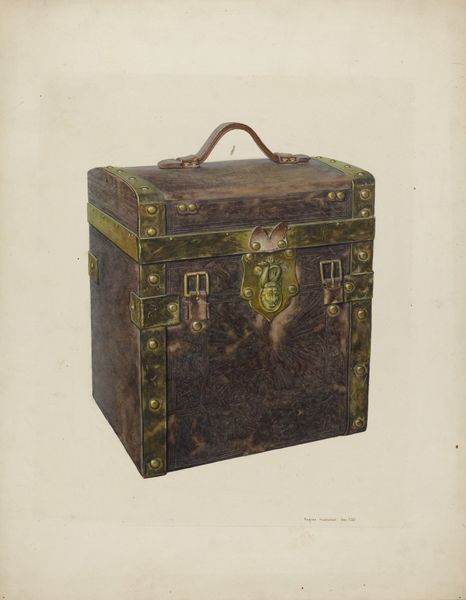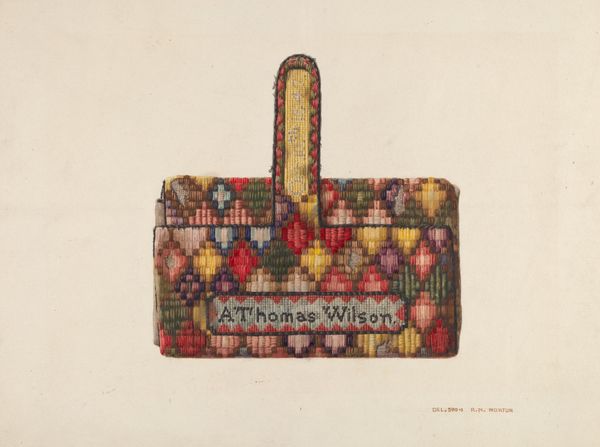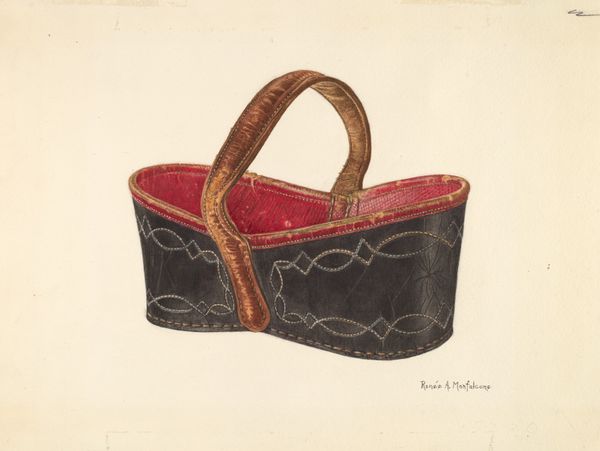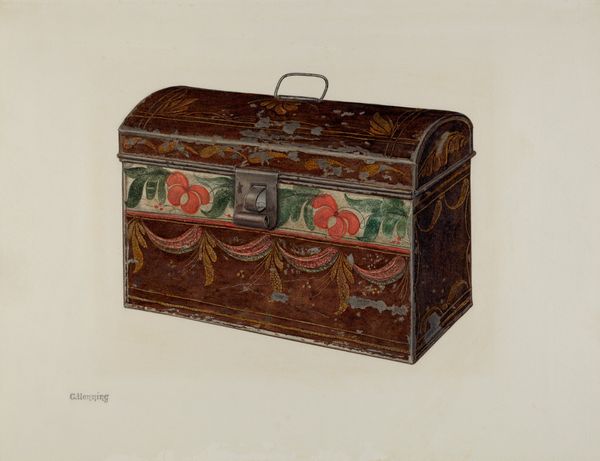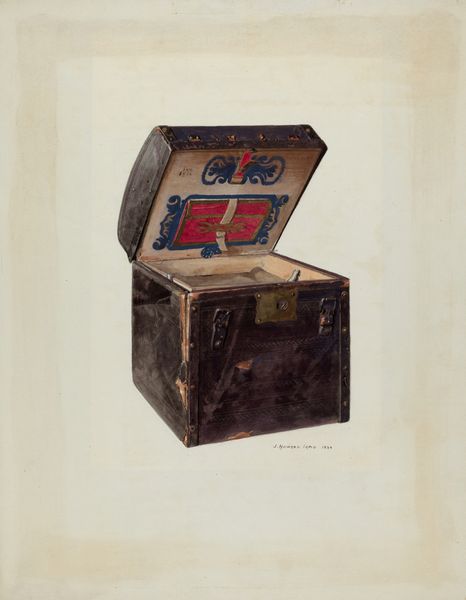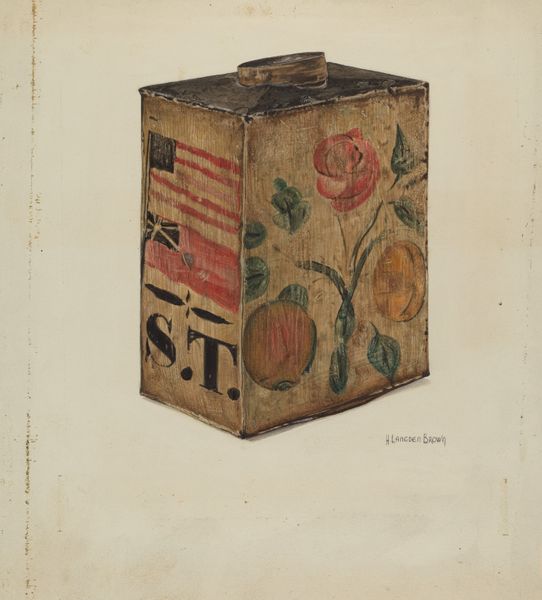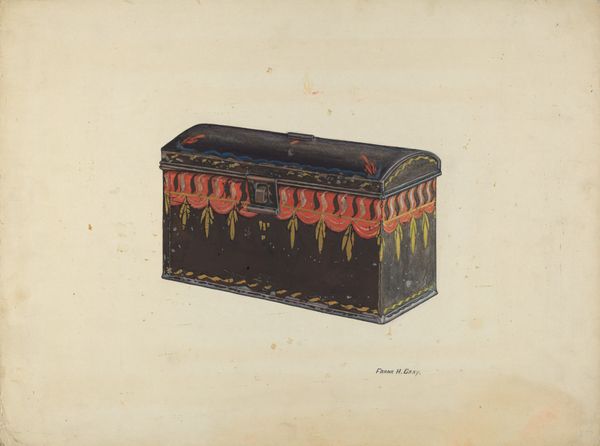
drawing, watercolor
#
drawing
#
watercolor
#
watercolour illustration
#
watercolor
Copyright: National Gallery of Art: CC0 1.0
Editor: We're looking at Edward L. Loper's "Lunch Box," created between 1935 and 1942, using watercolor and drawing techniques. The object itself, the lunch box, it has this really lovely folk-art style decoration. It makes me wonder about the stories this box could tell about its owner. What do you see when you look at it? Curator: Well, for me, seeing a lunchbox from this era immediately makes me consider the socio-economic context of the time. The Depression years, especially, significantly impacted daily life. Simple, everyday objects like lunch boxes took on new importance, reflecting not just sustenance but also a family's economic status and connection to the workforce. Editor: That's a great point. I hadn't considered the Depression-era context. How does that influence our interpretation of the artwork? Curator: Think about the imagery Loper chooses. While decorative, the painted details—the floral motifs, perhaps the stylized bunting—could represent a yearning for beauty or a striving for normalcy amidst hardship. Maybe they provided a small, private visual pleasure to the box’s owner during a difficult day. It prompts questions about access to art and beauty in working-class lives during that period. What would a contemporary audience think? Editor: So, it's not just a simple lunchbox, it’s a small piece of social history painted with care? Curator: Precisely! And thinking about Loper's position as an artist, this seemingly simple subject could be a statement about the value of the everyday, a celebration of resilience, and a quiet commentary on the social landscape of his time. Editor: This makes me see the image in a completely new way, as a poignant artifact reflecting a specific cultural moment. Thanks!
Comments
No comments
Be the first to comment and join the conversation on the ultimate creative platform.
